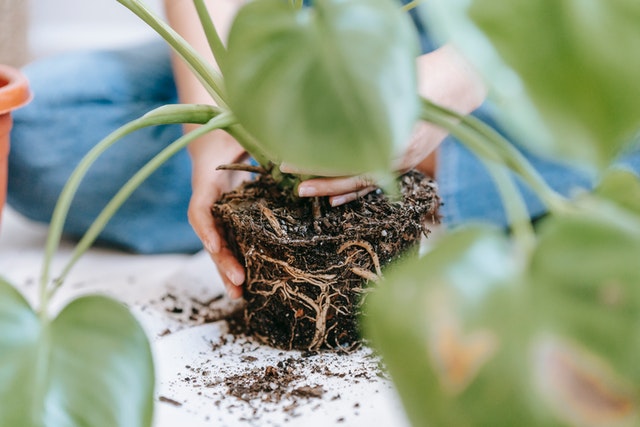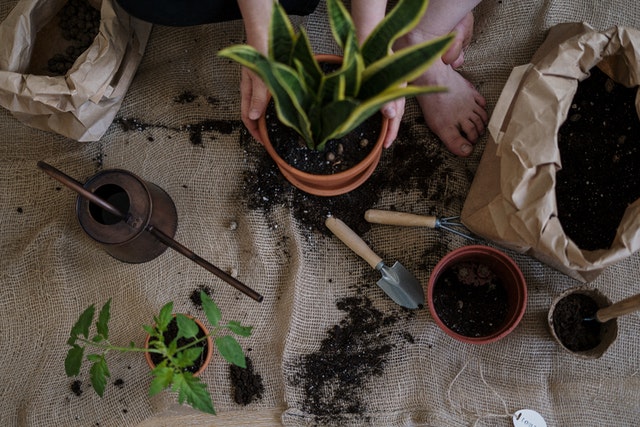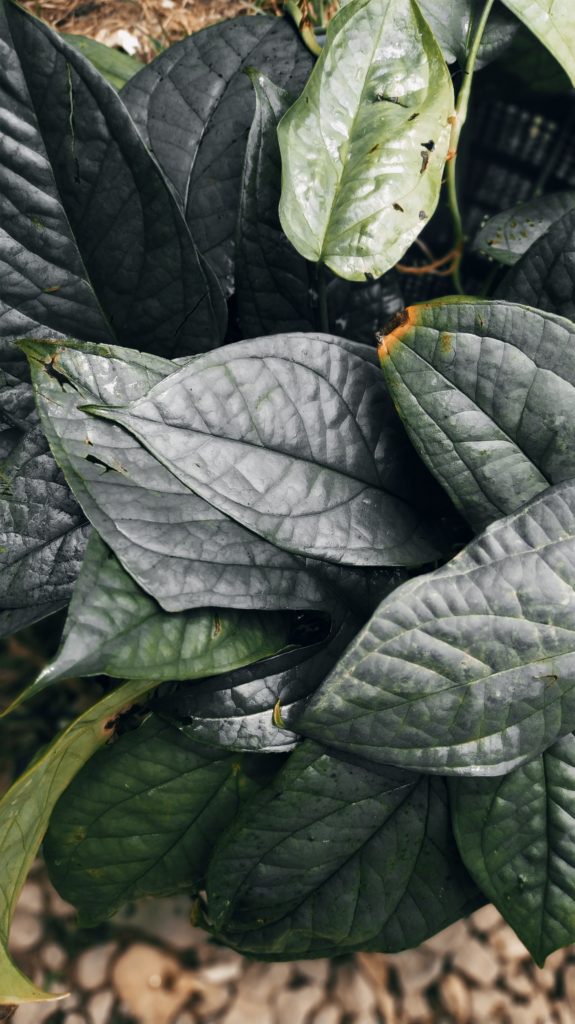The Amydrium Silver is a plant with many incredible characteristics and an attractive appearance. It’s one of the plants that has a crocodile-like structure on its leaves. It’s an avid climber and the ideal plant choice for beautification. Let’s learn more about this plant to know how best to care for it.
What is Amydrium Silver?
Amydrium Silver or Amydrium Medium Silver is one of many species of the Amydrium plants renowned for their rigorous climbing abilities and vigor. The plant is one of two varieties, the other being the Amydrium Medium Green.
This plant has an appearance that makes it distinct. Like other Amydrium plants in the Araceae family, its leaves appear like they’ve got scales; making them look like that of a crocodile. However, Amydrium Silver goes one step further to tune up its beauty by featuring silver patches on its leaves or having silver-green flowers.
Indeed, it’s a rare breed compared to other species of the plant. Thus, it makes for good ornamentation. What’s more? this plant is a vigorous climber as it can spread its leaves across trees, fences, or anything it leans on.
It can extend up to 50cm in height and 15cm in width upon reaching maturity. It’s a non-edible plant and a slow-grower.
Origin and Classification
This flowering plant belonging to the order – Alismatales; Family – Araceae; and Genus – Amydrium, is distributed across South Asia including the native range of Singapore, Malaysia, Cambodia, Myanmar, and Thailand. It can also be found in some Philippines and Indonesian Islands with temperate climates.
Features
Some distinctive and fascinating characteristics of the plant are highlighted below:
1. Height
Upon attaining adulthood, it can grow up to 50cm in height but at its young stage, its growth range is limited to 20cm. No Amydrium can exceed 50cm in height in growth. That’s like the standard for all species including this one.
2. Flowers & Leaves

This plant is blessed with succulent fenestrate leaves. Fenestrate means that its leaves have numerous openings and are unevenly reticulated. More so, it’s a flowering plant that produces blooming white flowers upon attaining maturation.
3. Foliage & Stem
It features narrow foliage and thin stems. Most flowering plants with this attribute usually have slow-growing potentials and this plant is not exempted from this fate.
4. Evergreen
When looking for a flowering plant with lush green leaves, Amydrium Medium Silver is the right pick. Its leaves are not only green but can remain green for a long period. Once it begins to change its color, that’s a sign something might be wrong with the plant.
Basic Care of Amydrium Silver
Amydrium silver is an easy-to-grow plant that often turns out to be beautiful and captivating. Growing this plant does not require any extra stress or attention. You can simply care for this plant by following the simple principles required to see your plant blossom.
1. Size and Growth
At its tender stage, its growth range is usually within 20cm in height and 10cm in width. However, in the adult stage, it can grow up to 50cm in height and 15cm in width. Its growth is guaranteed if exposed to favorable conditions including the right light, temperature, soil, and humidity.
2. Light Requirement

Just like many other plants, this flowering plant prefers bright indirect light. This plant doesn’t do well with direct sunlight. Low or indirect light will do as direct or bright sunlight can cause countless harm to the plant, especially its leaves.
Also, using insufficient light can delay the growth of the plant which can be heartbreaking. Place this plant in any position where it will get the recommended amount of light such as near the window. Get a grow light ready for your plant which will provide optimum indirect sunlight for your plant during the winter months. You’ll be amazed at the outcome of your plant when it gets adequate sunlight.
3. Water Requirement
Water is another important factor to consider when taking care of your plant. Lack of water, as well as excess water, can affect the plant negatively. The right amount of water will keep your plant’s leaves fresh and the roots firm. Do not water too often as this can cause root rot and damage the plant.
Ensure you inspect the soil to be sure of the soil moisture level before you rewater your plant. You can do this by inserting your finger 2 to 3 inches deep into the soil. Water your plant once the soil is dry to avoid the leaves drooping but do not water too much, once or twice a week is enough.
4. Soil Requirement
The type of soil used for this plant will also determine its outcome. While putting many factors into consideration, the soil requirement should also be given special attention and consideration. Soil forms the basis of the growth of this plant and not using the right soil can damage the plant halfway.
This plant requires a well-draining soil mixture with adequate and rich nutrients. Whatever soil you use must be well-draining even if you want to make use of a home mixed soil. You can also apply cactus mix into the soil to keep the soil from any form of root disease.
5. Temperature and Humidity
This plant will thrive with a humidity between 67 to 70%. In places where the plant is kept within an environment with low humidity, a humidifier will help increase the humidity of the plant. In case you have just a single plant, you can also make use of a flat tray to increase the humidity of this plant.
Amydrium silver should also be planted in a place with a temperature between 18°C to 30°C. The right temperature and humidity will keep the leaves fresh and beautiful at all times. Your plant will glow with the right housing that provides adequate temperature and humidity.
6. Drought and Disease Resistance
Most plants need an adequate supply of water to survive and this plant is not an exception. So, at no point should it be exposed to drought-like conditions. Ensure to water the plant regularly. However, water mildly as excess watering may cause root rot.
Also, it must be emphasized that this flowering plant is not prone to any type of disease but if not cared for adequately, may become infected with pathogens that might kill it in the short run.
7. Toxicity
Amydrium silver is a highly toxic plant. This plant is toxic to humans and pests so always keep your cats, dogs, and kids far away from this plant. With all its parts being toxic, it should not be ingested. If eaten, it can lead to vomiting, nauseous, and skin irritation.
In case you notice that your pet has eaten this plant, then take it to a vet who will care for your pet. If you also noticed that this plant has been eaten by your kids take them to the hospital so they can be treated on time.
8. Fertilizing

In as much as fertilizer is essential for the growth of every plant, too much fertilizer can also kill a plant. Amydrium silver doesn’t require applying too much fertilizer to it. This plant can make do with fertilizing once a week.
Dissolve liquid organic fertilizer into the water before spraying on the leaves. Oftentimes, potting soil comes with enough nutrients needed for the plant to grow and produce offspring. Fertilize once you realize your plant has exhausted the nutrients in the soil.
9. Potting and Repotting
Potting this plant at its tender age is the best idea. Unless it outgrows its initial pot or shows signs of root rot, you may not re-pot for a long time, even up to two years. That said, it’s best when potting or repotting to mix the soil.
10. Pruning Requirements
It’s the perfect option for those who don’t have the luxury of time because it requires no pruning at all. Although the plant can take care of itself, with little help, it will grow into a marvel. That’s why you can cut off any dry and leave your spot on its stem and that requires less time and effort to do.
How To Propagate Amydrium Silver
Should you like to have more of this plant, its method of propagation is quite easy to do. Follow the simple steps below to get started:
1. Get Cuttings

It’s impossible to propagate this plant without its nodes which usually grow on its runners. To speed up the propagation process, get cuttings with nodes. Those without nodes will require to be submerged in water for a while.
2. Water Propagates The Cuttings
Any of the options are suitable for growing a young plant. Water propagates the plant by putting cuttings in clean water and waiting for its nodes to appear. Once one to two nodes appear, plant into a pot or box with well-draining soil and add little fertilizer.
3. Use Moss Poles or Bamboos For Runners
This plant is an unrepentant climber. So, the first thing it does is send out its runners for light. On these runners are nodes that are needed for growing the plant. Putting a moss pole or bamboo will help the plant extend its runners upward and this will ease its growth.
Common Problems In Caring for Amydrium Silver
While it’s a surety that growing the plant comes with less stress, some challenges may hinder its smooth growth. You must watch out for the following to avoid or control the plant’s exposure to them.
1. Overwatering
Exposing this plant to too much water will only drain vitality and vigor from it. So, this must be avoided at all costs. It only requires mild watering and that should happen when you spot some sort of dryness on its leaves. When it’s overwatered, it gets discolored from green to yellow and might be dying gradually.
2. Direct Sunlight

This is not a desert plant that needs extreme sunlight to bud. Even if this plant were to grow in the jungle, there’s no way it’s getting direct sunlight because of the canopy extended by trees to protect it. Those exposed to the sun would get burnt or sapped. That’s to say sunlight is a big no-no for the plant. Instead, expose the plant to indirect low light.
Learn more from a similar post: Alocasia Infernali Plant, Grow & Care Guide 2022
Outro
Amydrium Silver should be the ideal choice you should go for if you need a plant that’s easy to care for. It requires little watering, no or little fertilizer, and no or mild pruning. It will grow well on its own but at its pace. However, it must be exposed to favorable conditions; else, it might die.
Buying Options
Order for this plant on Etsy right now. Why? This is because it’s a rare breed and the demand for it is usually on the high side. Click the link below to get instant access to the marketplace.
Frequently Asked Questions
Is Amydrium Silver Poisonous?
Yes! this plant is highly poisonous; as such, it’s not edible. All its parts, from the stem to the leaves are toxic. It’s not a plant that can be mishandled or ingested.
Mishandling might result in skin irritation and nausea. It’s best to keep the pet out of the reach of your kids and pets Quickly take your kids or pets for immediate care if they get exposed to the plant or ingest it.
Does Amydrium Silver produce flowers?
Yes! this plant is a flowering plant and produces physically appealing flowers in its due time. The plant produces white flowers which makes the plant, one of the best choices for beautification. Note that this plant is a slow grower; as such, it might take time for its flowers to emerge. When they do, we’re sure it’ll be worth the wait.
Do Amydrium silver do well when exposed to direct sunlight?
No! Never expose this plant to the direct rays of the sun; you’ll be killing it if you do. Direct sunlight can burn the plant and sap nutrients from its root. So, it’s better to steer clear from doing that. Rather, ensure to keep this plant where it can get bright indirect light from the sun.

Hey, I’m Lisa and I’ve been an avid gardener for over 30 years. I love writing, talking and living in the garden! Feel free to connect with me on my socials below

